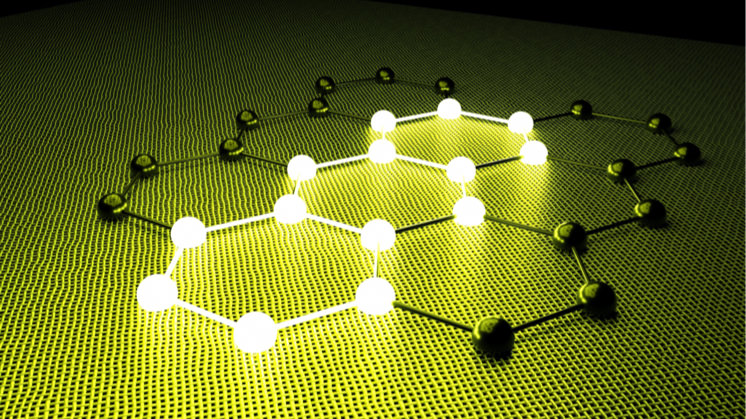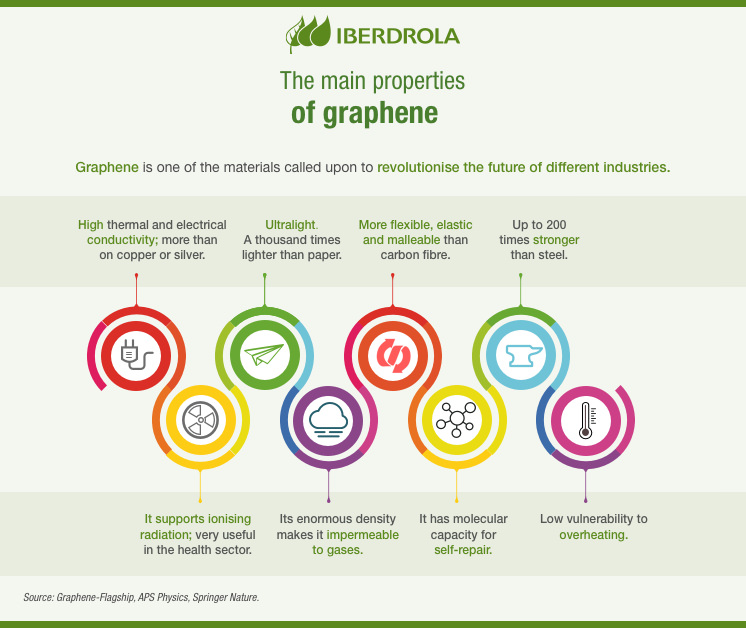Smart materials
Smart materials, discover the materials with which we will shape the future
Society R&D Social transformation
Drugs that are released into the bloodstream at the first sign of infection, buildings that react to weather conditions or mobile phone screens that repair themselves... These are just some of the possible applications of so-called smart materials, the latest revolution in the field of materials science.

Human evolution is linked to the manipulation of the environment. Since the first hominid to use a stone as a tool — or a bone according to the iconic scene from 2001: A Space Odyssey —, we have come to recognise this as materials science. This discipline uses physics, chemistry and engineering to study how materials are formed and what their physical properties are, as well as to discover and develop new materials, such as smart materials in order to find new uses applicable to any sector.
What are smart materials?
Smart materials are materials that are manipulated to respond in a controllable and reversible way, modifying some of their properties as a result of external stimuli such as certain mechanical stress or a certain temperature, among others. Because of their responsiveness, smart materials are also known as responsive materials. These are usually translated as "active" materials although it would be more accurate to say "reactive" materials.
For example, we can talk about sportswear with ventilation valves that react to temperature and humidity by opening when the wearer breaks out in a sweat and closing when the body cools down, about buildings that adapt to atmospheric conditions such as wind, heat or rain, or about drugs that are released into the bloodstream as soon as a viral infection is detected.
Types of smart materials
Nowadays, there are different types of smart materials and new ones arise every day, thanks to investment in R+D+i. Among them, the following should be highlighted:
 Piezoelectric materials
Piezoelectric materials
They can convert mechanical energy into electrical energy and vice versa. For example, they change their shape in response to an electrical impulse or produce an electrical charge in response to an applied mechanical stress.
 Shape memory materials
Shape memory materials
They have the ability to change the shape, even returning to their original shape, when exposed to a heat source, among other stimuli.
 Chromoactive materials
Chromoactive materials
They change colour when subjected to a certain variation in temperature, light, pressure, etc. Nowadays, they are used in sectors such as optics, among others.
 Magnetorheological materials
Magnetorheological materials
They change their properties when exposed to a magnetic field. For example, they are currently used in shock absorbers to prevent seismic vibrations in bridges or skyscrapers.
 Photoactive materials
Photoactive materials
There are several types: electroluminescents emit light when they are fed with electrical impulses, fluorescents reflect light with greater intensity and phosphorescents are able to emit light after the initial source has ceased.
Examples and applications of smart materials
Materials science is a constant supply of news about new discoveries that could revolutionise our future. We review some of the most amazing materials from recent years below:
-
Synthetic spider web. This material is not only five times stronger than steel, but also has great elasticity. Its potential uses include: bulletproof clothing, artificial skin for burns or waterproof adhesives.
-
Shrilk. Its main component is chitin, a carbohydrate found in krill shells. It was created by researchers from Harvard University and is considered the ideal substitute for plastic — since its decomposition time is only two weeks and it also works as a stimulant for plant growth —.
-
Graphene. Its potential uses are almost unlimited: batteries with more autonomy, cheaper photovoltaic solar cells faster computers, flexible electronic devices, more resistant buildings, bionic limbs, etc. All this is possible thanks to their multiple properties.

SEE INFOGRAPHIC: The main properties of graphene [PDF] External link, opens in new window.
-
Metamaterials. They are manufactured in the laboratory with unusual physical properties not found in nature and are the subject of research in fields such as the military, optics or telephony. They can, for example, bend electromagnetic waves of light creating negative refractive indices.
-
XPL. It is a silicone-based polymer that adheres to the dermis like a second skin. Created by scientists at the Massachusetts Institute of Technology (MIT), it replicates the appearance of young, healthy skin by rejuvenating the look of the wearer.
In addition, there are other materials that have made headlines in recent years. These include stanene, which could be the super condenser of the future; silicone, which many compare to graphene; vanadium dioxide, with an ability to transit electricity without emitting heat, which promises to revolutionise electronics; and thermochromic cement and self-repairing concrete, intended to increase the energy efficiency of housing and the life span of buildings respectively.
One of the areas of research where materials science has advanced most in recent years is in the development of new materials for use in 3D printing, which is already used in sectors as diverse as design, medicine, architecture and food. The most widely used are thermoplastics, especially polylactic acid (PLA) and acrylonitrile butadiene styrene (ABS), which are used in mobile phone casings, toys and car bodies. Smart materials are also starting to be printed thanks to 4D printers.




